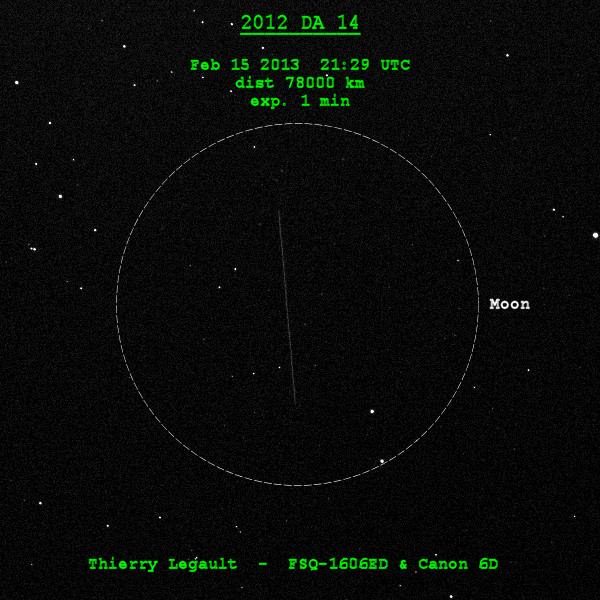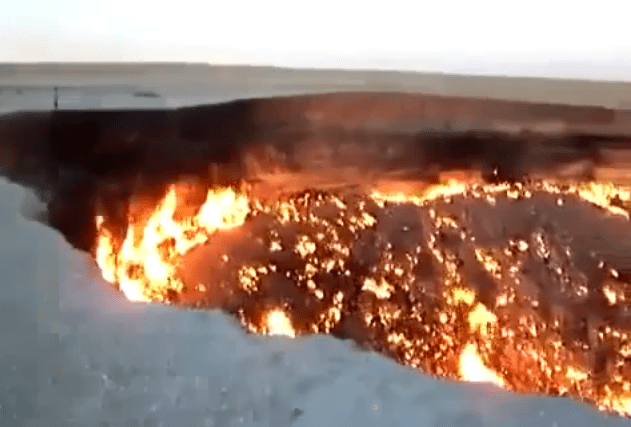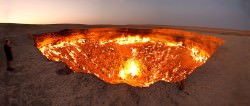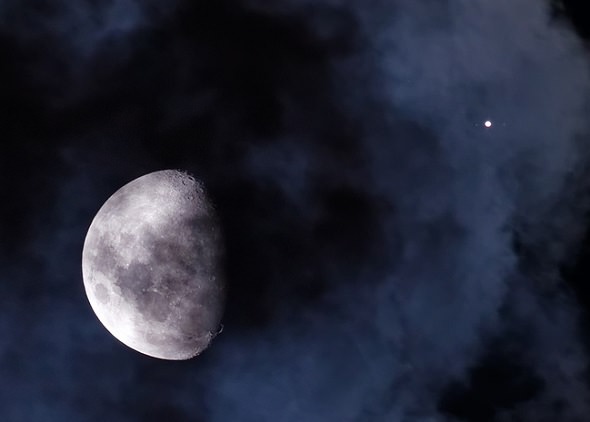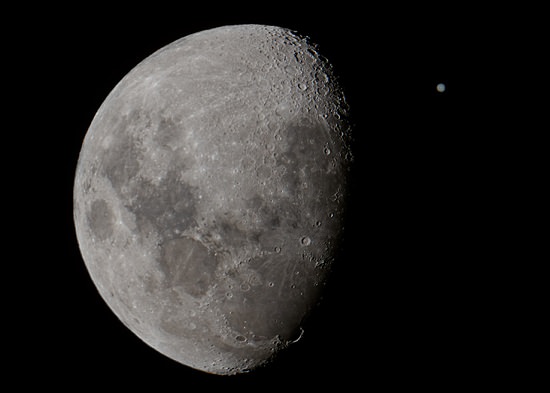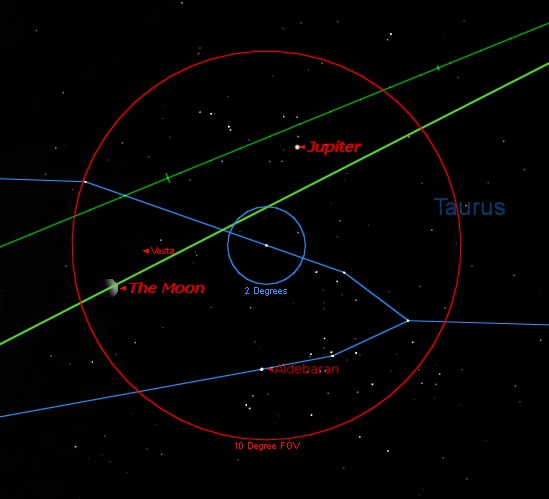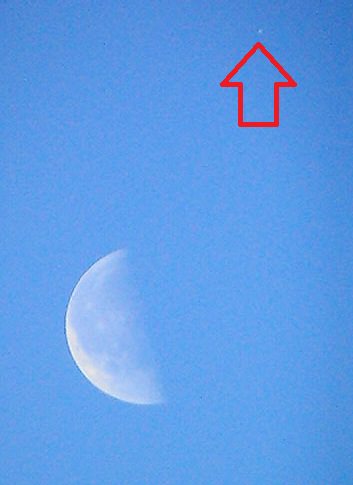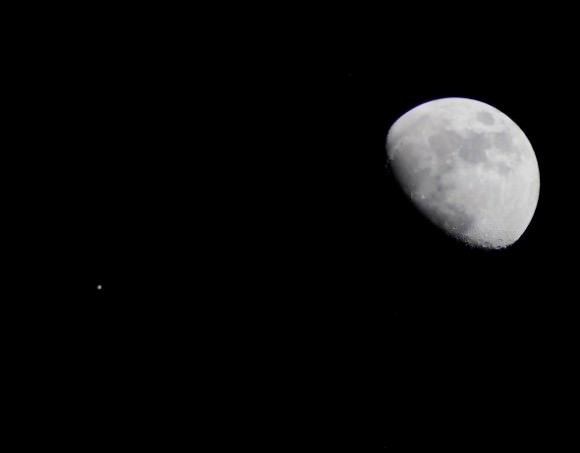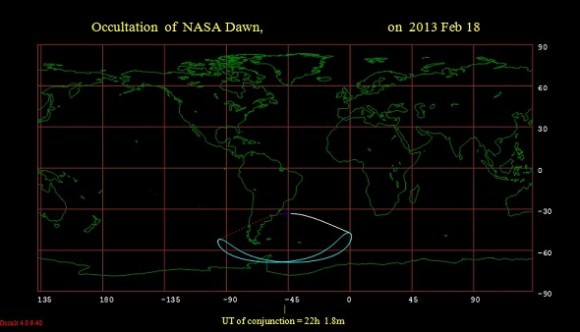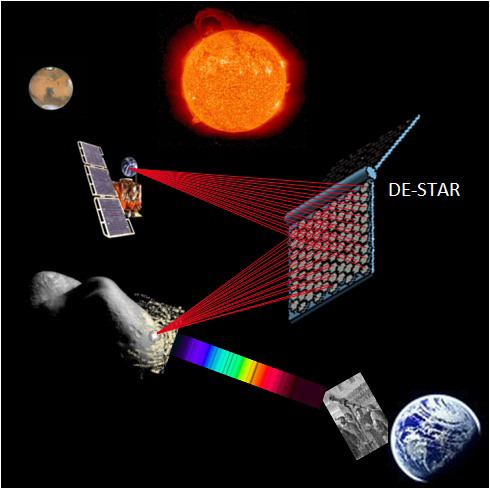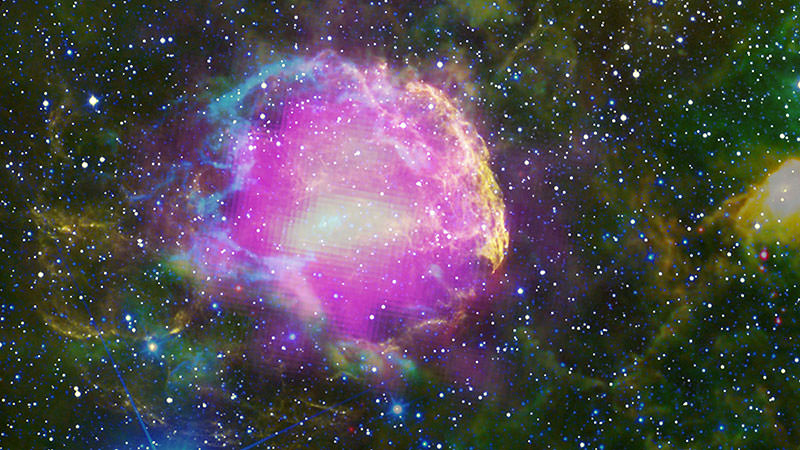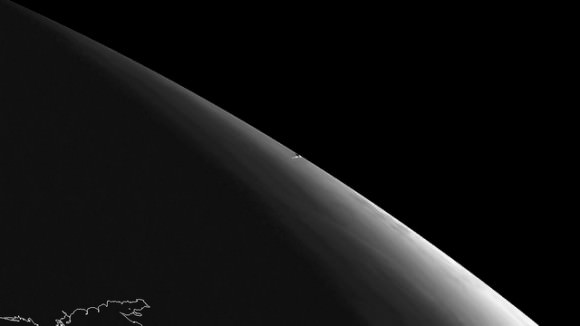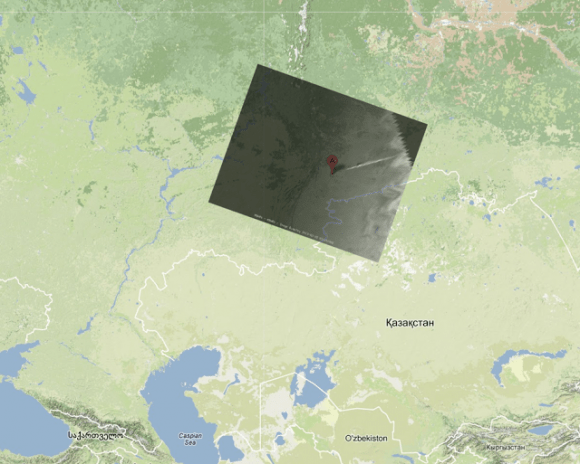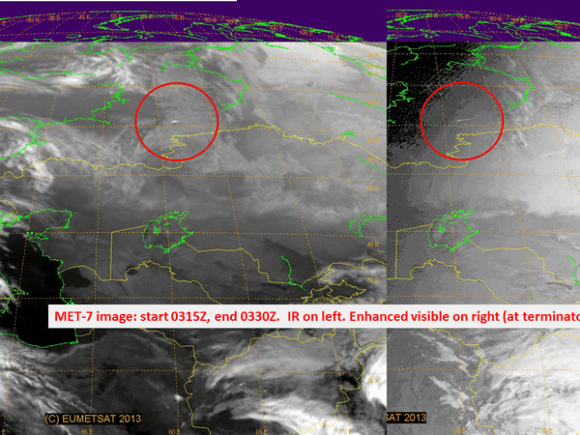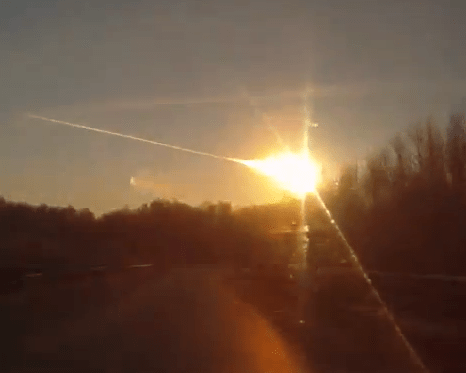Yesterday a 50 meter (160 foot) rock passed just over 27,000 kilometers (17,000 miles) from the Earth’s surface. This big space rock, named 2012 DA14, dodged us while another smaller and unrelated asteroid gave us an extraterrestrial punch over Russia (read more about that here). Telescopes around the world — both big professional ones and smaller amateur ones — focused on the fast-moving 2012 DA14, whizzing along at 28,100 kilometers per hour (17,450 miles per hour), or 7.82 kilometers per second (4.8 miles per second) relative to Earth.
Here are some of the images from around the world of 2012 DA14. Noted French astrophotographer Thierry Legault sent Universe Today a note that he “easily spotted it visually through the 4″ refractor. It was running very fast amongst the stars!” he said.
In a really nice piece of astrophotography, François Colas from the Pic du Midi observatory in southern France captured the fast moving asteroid with just the right combination of exposure, allowing him to get the asteroid as a point and not a line. He used a Pentax K5 – 6400 ASA – 85mm f/1.4. Field of view 15°
Richard Fleet from Wiltshire, England also got a good capture of the asteroid. “Clouds were a problem most of the evening but I did manage to catch it going past the Coma Berenices cluster,” he said via email. “I saw the asteroid several times in 15×75 binoculars and the motion was obvious in seconds when it was near a star, though it took a bit longer to be sure in the more barren areas.”
He used a used a 200mm lens on a Canon 5D for the very nice sequence as it ‘ran among the stars’:

The Remanzacco Observatory team has been following 2012 DA14 for a few days (click on the image above for their animation if it not ‘animating’.) See their website for several different shots from various remote telescopes around the world.
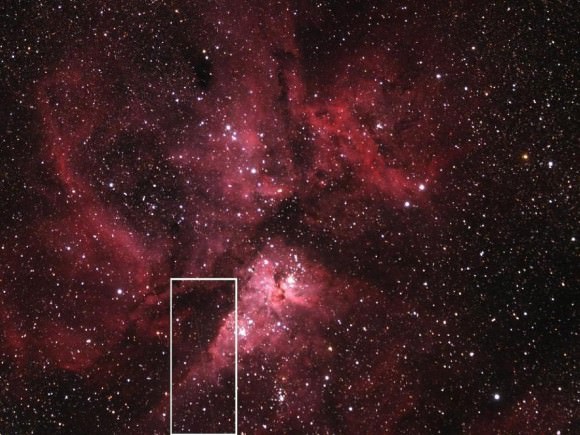
This image shows asteroid 2012 DA14 and the Eta Carinae Nebula, with the white box highlighting the asteroid’s path. The image was taken using a 3″ refractor equipped with a color CCD camera. The telescope is located at the Siding Spring Observatory in Australia and is maintained and owned by iTelescope.net. Credit: Aaron Kingery/NASA/MSFC
Gianluca Masi from the Virtual Telescope Project held a special webcast for the close approach of this asteroid. He reported they had more than 150,000 viewers from 166 countries. “Unfortunately, the clouds came, too, but at least we had some clear skies soon after the minimum distance was [reached],” he wrote. “For the occasion, the PlaneWave 17? robotic unit was used, trusting its exceptional Paramount ME robotic mount. The mount was controlled by TheSkyX Pro suite and the software was perfectly tuned to track this VERY DIFFICULT target. The results shown here speak by themselves: the asteroid was perfectly tracked, despite it was moving at 0.65 degrees per minute! All this after the scope was just slewed, without any manual adjustment! Amazing.”
2012 DA14 was about 36,500 km from Earth at the time.

The Talmassons astronomy club from Udine, Italy took this imagery:
Shahrin Ahmad from Kuala Lumpur, Malaysia posted some of his images on Google+:
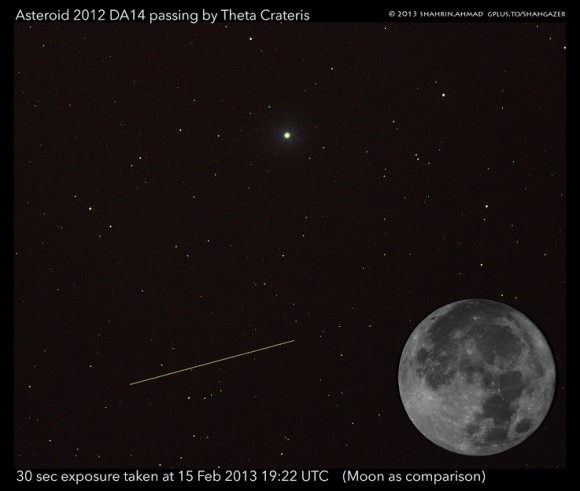
Nahum Mendez Chazarra from Spain’s Centro de Investigación y Divulgación Astronómica del Mediterráneo sent the video below. You can see more images on their Facebook page.
The Bareket Observatory in Israel had a live webcast of 2012 DA14’s close pass, and they reported they had more than 150K viewers overall. Here is a video they put together of some of the highlights of their observations:
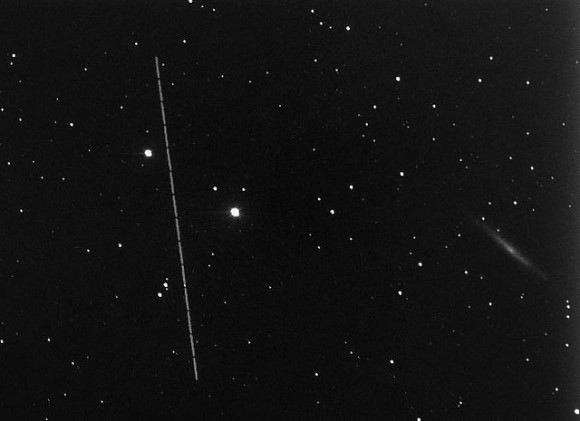
Nick Rose from San Mateo, California tracked 2012 DA14 on its way as it headed away from Earth, using a 6″ reflector with a high end Orion CCD imager on a modified Vixen Super Polaris mount, on the evening of February 15. “I inverted the image to make it easier to see the asteroid,” Nick said, “and the video consists of 100 10 second Binned 1×1 images.”
Mikko Suominen, a freelance science journalist from Finland created this 3-D animation based on the JPL’s information graphics using rendering software called Blender. “They ar not extremely precise,” Suominen said via email, “but for popular science purposes I think they are accurate enough.”
Want to get your astrophoto featured on Universe Today? Join our Flickr group or send us your images by email (this means you’re giving us permission to post them). Please explain what’s in the picture, when you took it, the equipment you used, etc.

